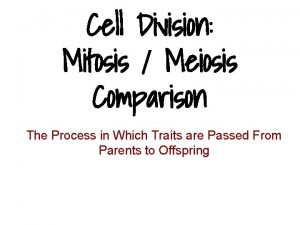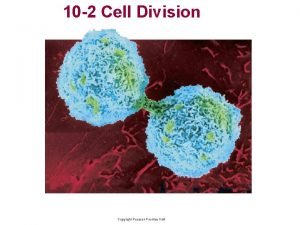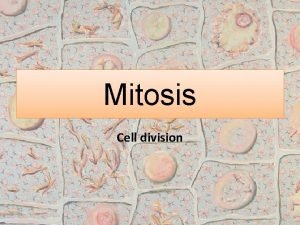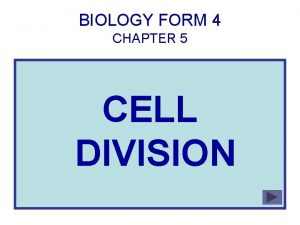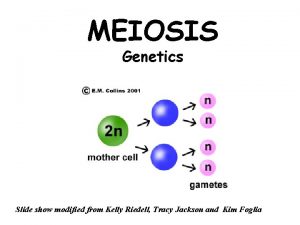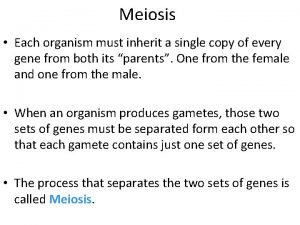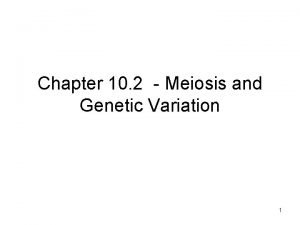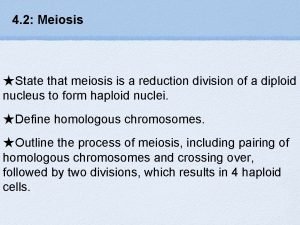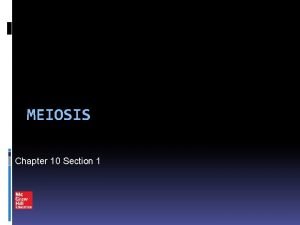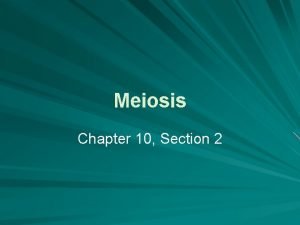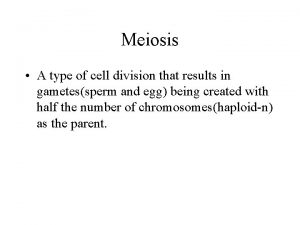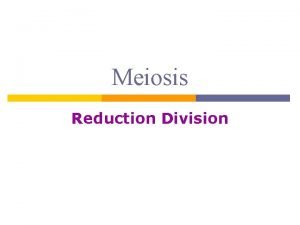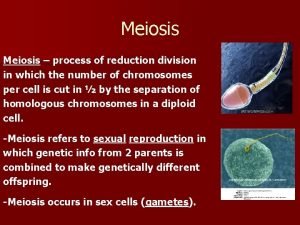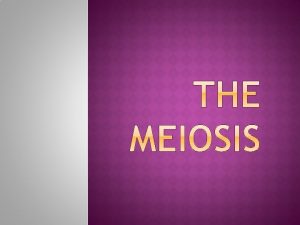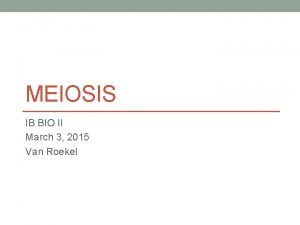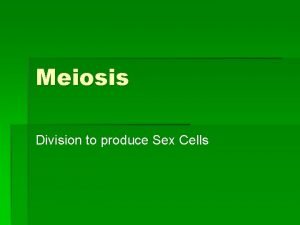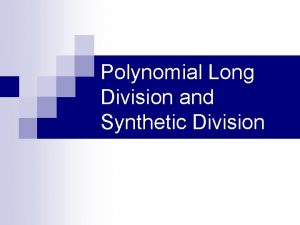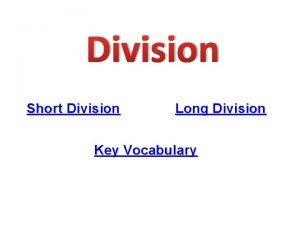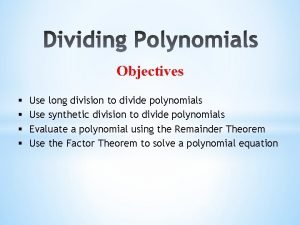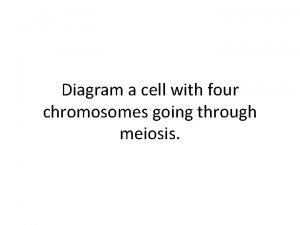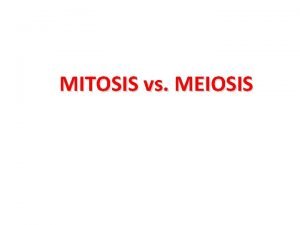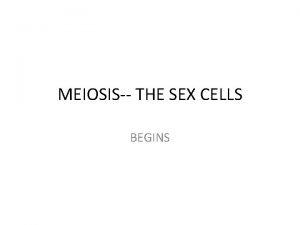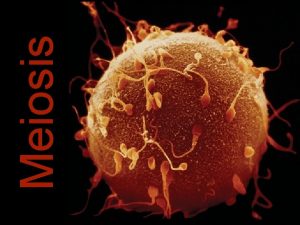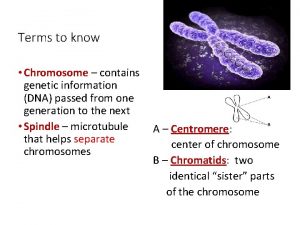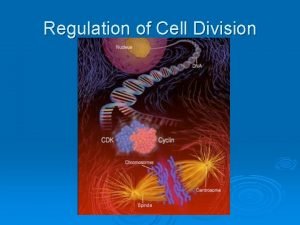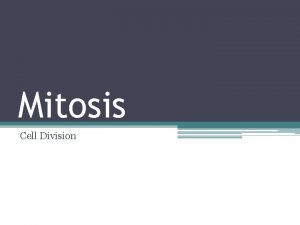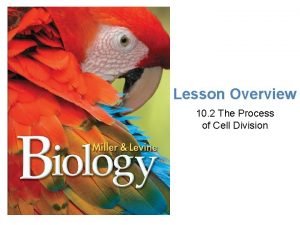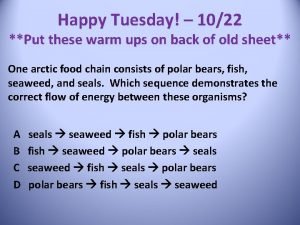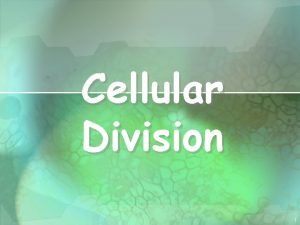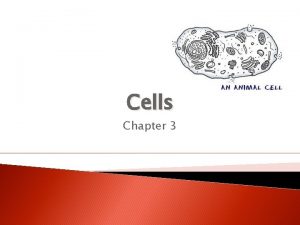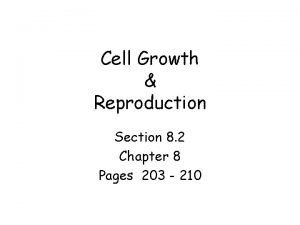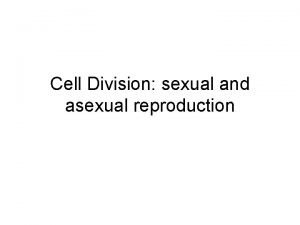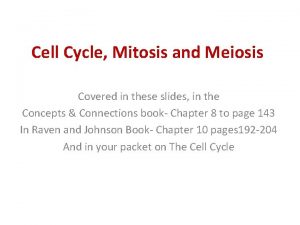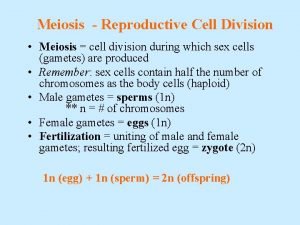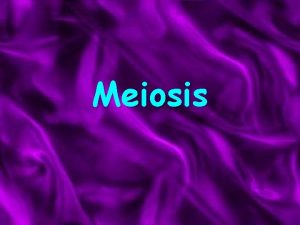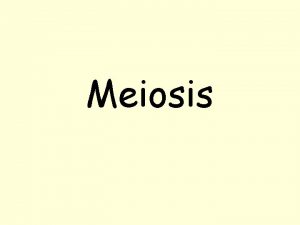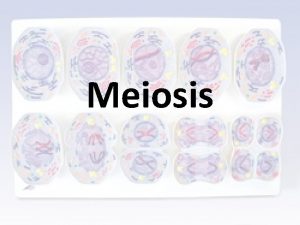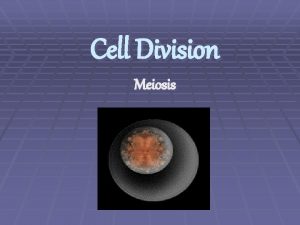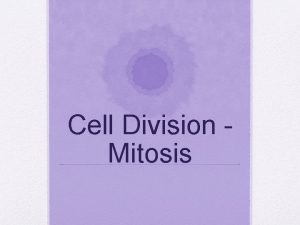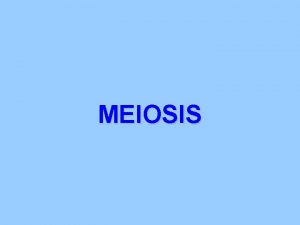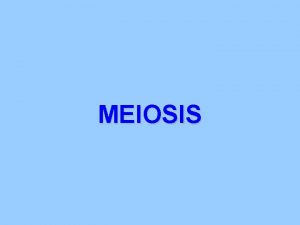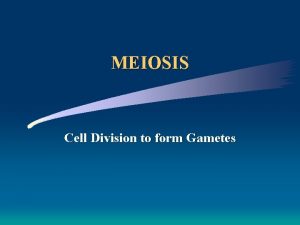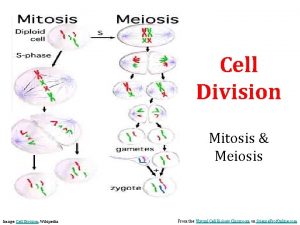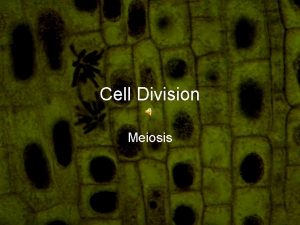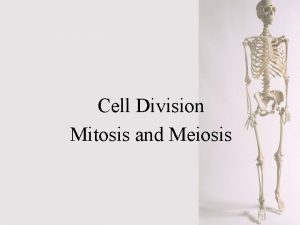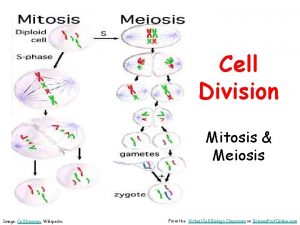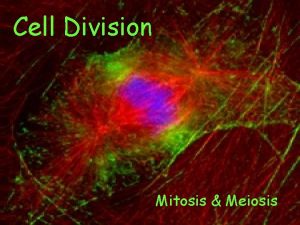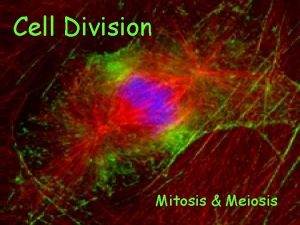MEIOSIS Meiosis The form of cell division by

MEIOSIS

Meiosis • The form of cell division by which gametes, with half the number of chromosomes, are produced. • Diploid (2 n) haploid (n) • Meiosis is sexual reproduction. • Two divisions (meiosis I and meiosis II). II

Fertilization • The fusion of a sperm and egg to form a zygote • A zygote is a fertilized egg n=23 egg sperm n=23 2 n=46 zygote

Meiosis • Sex cells divide to produce gametes (sperm or egg) • Gametes have half the # of chromosomes • Occurs only in gonads (testes or ovaries). Male: spermatogenesis Female: oogenesis • Meiosis is similar to mitosis with some chromosomal differences.

Spermatogenesis human sex cell n=23 sperm n=23 2 n=46 haploid (n) diploid (2 n) n=23 meiosis II

Interphase I • Similar to mitosis interphase. • Chromosomes replicate (S phase). • Each duplicated chromosome consist of two identical sister chromatids attached at their centromeres • Centriole pairs also replicate.

Interphase I • Nucleus and nucleolus visible. chromatin nuclear membrane cell membrane nucleolus

Meiosis I (four phases) • Cell division that reduces the chromosome number by one-half. • four phases: phases a. prophase I b. metaphase I c. anaphase I d. telophase I

Prophase I • Longest and most complex phase (90%). • Chromosomes condense. • Synapsis occurs: homologous chromosomes come together to form a tetrad • Tetrad is two chromosomes or four chromatids (sister and nonsister chromatids).

Prophase I - Synapsis Homologous chromosomes sister chromatids Tetrad sister chromatids

Homologous Chromosomes • Pair of chromosomes (maternal and paternal) paternal that are similar in shape and size. • Homologous pairs (tetrads) carry genes controlling the same inherited traits. • Each locus (position of a gene) is in the same position on homologues. • Humans have 23 pairs of homologous chromosomes. a. 22 pairs of autosomes b. 01 pair of sex chromosomes

Karyotype • A method of organizing the chromosomes of a cell in relation to number, size, and type.

Homologous Chromosomes eye color locus hair color locus Paternal Maternal

Crossing Over • Crossing over (variation) may occur between nonsister chromatids at the chiasmata • Crossing over: over segments of nonsister chromatids break and reattach to the other chromatid • Chiasmata (chiasma) are the sites of crossing over

Crossing Over - variation Tetrad nonsister chromatids chiasmata: site of crossing over variation

Another Way Meiosis Makes Lots of Different Sex Cells – Crossing-Over Crossing-over multiplies the already huge number of different gamete types produced by independent

Prophase I spindle fiber aster fibers centrioles

Metaphase I • Shortest phase • Tetrads align on the metaphase plate • INDEPENDENT ASSORTMENT OCCURS: 1. Orientation of homologous pair to poles is random. 2. Variation

Metaphase I OR metaphase plate

Anaphase I • Homologous chromosomes separate and move towards the poles. • Sister chromatids remain attached at their centromeres

Anaphase I

Telophase I • Each pole now has haploid set of chromosomes • Cytokinesis occurs and two haploid daughter cells are formed.

Telophase I

Meiosis II • No interphase II (or very short - no more DNA replication) replication • Remember: Meiosis II is similar to mitosis

Prophase II • same as prophase in mitosis

Metaphase II • same as metaphase in mitosis metaphase plate

Anaphase II • same as anaphase in mitosis • sister chromatids separate

Telophase II • Same as telophase in mitosis • Nuclei form. • Cytokinesis occurs. • Remember: four haploid daughter cells produced. gametes = sperm or egg

Telophase II

Meiosis sex cell n=2 sperm n=2 2 n=4 haploid (n) diploid (2 n) n=2 n=2 meiosis II

Variation • Important to population as the raw material for natural selection. • Question: What are three sources of genetic variation?

Answer: 1. crossing over (prophase I) 2. independent assortment (metaphase I) 3. random fertilization 4. mutations (next chapter) Remember: variation is good!

Question: • A cell containing 20 chromosomes (diploid) at the beginning of meiosis would, at its completion, produce cells containing how many chromosomes? chromosomes

Answer: • 10 chromosomes (haploid)

Fertilization • The fusion of a sperm and egg to form a zygote • A zygote is a fertilized egg n=23 egg sperm n=23 2 n=46 zygote

Sources • www. ursulinehs. org/powerpoint/meiosis. ppt • www. biology 4 teachers. com/Cell%20 Divi sion/MEIOSIS. ppt • http: //www. iteachbio. com/Life%20 Scien ce/Life. Functionsand. The. Cell/Meiosis. ppt
- Slides: 36
